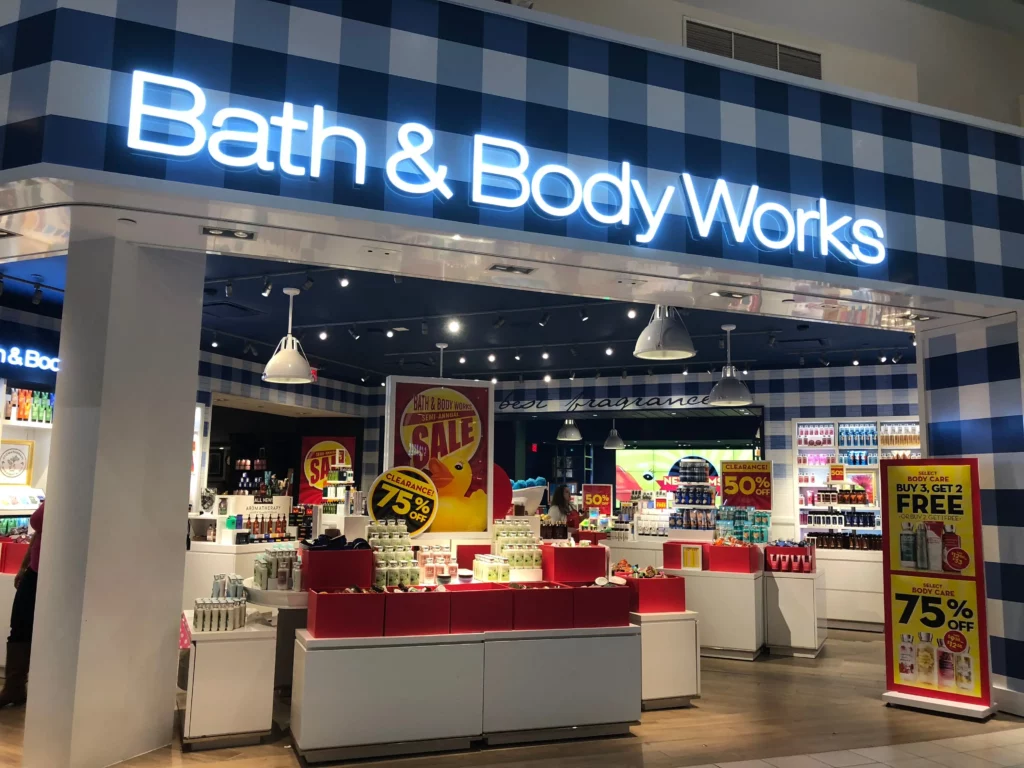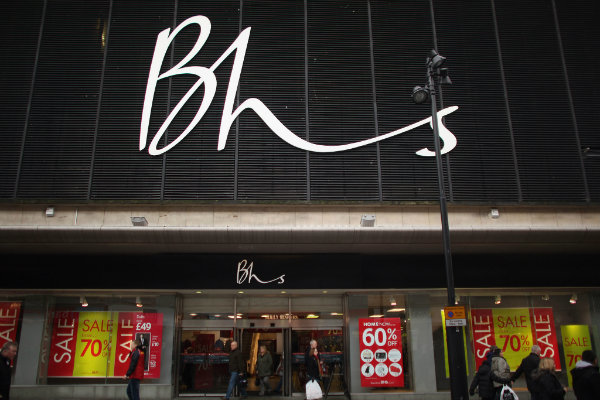Yesterday marked the deadline for any company employing more than 250 people to publish their gender pay gap statistics, with over 10,000 so far doing so.
Of that total, more than 1000 waited until the last day to release their data.
Retail employs just under three million people in the UK, 60 per cent of whom are female. Despite this, just 10 per cent of retail boardroom positions are held by females.
In an industry where 90 per cent of transactional decisions are made by women, the disparity in pay is perhaps one of the most significant among all industries in the country.
Now that all the largest retailers in the UK have released their data, the Retail Gazette takes a look at which companies pay women the most, and which come up short.
The reports are broken down here into three categories. The first two are the average figures of how much less women are paid than men in both mean and median terms.
There is also a breakdown of how four separate pay tiers (and therefore seniority) are split between genders. This is particularly relevant as a majority of retailers cite having a disproportionate amount of females in the top pay tiers as a key influence on their mean and median figures.
Therefore it is often prudent to use the median as a measure as it represents a more accurate picture of what the typical man and woman will be paid.
It is important to note that gender pay gap is different to equal pay, which deals with the pay differences between men and women who carry out the same jobs.
Aldi
Mean 11.5 per cent – Median 4.8 per cent
Women represent close to 50 per cent of employees across all pay tiers, other than highest where it drops to 30 per cent.
Asda
Mean 12.5 per cent – Median 8.9 per cent
Women dominate the bottom tier representing 70 per cent. This drops gradually across the pay grades at 64, 56 and 34 per cent at the very top.
Asos
Mean 32.8 per cent – Median 40.9 per cent
Asos has one of the highest pay disparities in the fashion sector. Though the women represent over 70 per cent of the lower pay tiers, it doesn’t drop too dramatically in the top tier at 41 per cent, meaning the skew on the results will be less than other firms.
READ MORE:
B&M
Mean 7.6 per cent – Median 0 per cent
B&M’s staff are fairly balanced, with women making up 41 per cent of the top tier and between 50 and 60 per cent in the bottom three.
B&Q
Mean 8.8 per cent – Median 2 per cent
In the bottom three tiers, the proportion of women sits in the mid-40s, dropping to 38 per cent in the highest tier.
Bathstore
Mean 11 per cent – Median 9 per cent
Women represented around 65 per cent of employees at all pay tiers except the lower middle which dropped to 54.
Boohoo
Mean 5.9 per cent – Median 0 per cent
One of the most balanced in the fashion sector in terms of averages and employees, with women representing 57 per cent of the top tier and around 50 per cent of the bottom two.
Boux Avenue
Mean 75.4 per cent – Median 75.7 per cent
A prime example of how figures could be skewed as Boux Avenue only has male employees in the top pay quartile which is made up of 91 per cent women. The other three are 100 per cent female.
Carpetright
Mean 8.1 per cent – Median 6.5 per cent
Carpetright has one of the lowest levels of female employees of any retailer on the list, dropping gradually from 28 per cent in the bottom pay tier to just 19 per cent in the top.
Cath Kidston
Mean 39 per cent – Median 24 per cent
Cath Kidston is almost entirely made up of women, with 87 per cent of the top pay tier being female, rising to 96 and 99 per cent at the bottom two.
Debenhams
Mean 19.9 per cent – Median 0.3 per cent
Largely dominated by women at all pay tiers, hovering around 80 per cent in the bottom three, dropping to 69 in the top pay tier.
Diesel
Mean 6.2 per cent – Median 2 per cent
Close to a 50-50 spread across all tiers, dropping to 45 per cent in the lower middle tier.
Evans Cycles
Mean 6.6 per cent – Median 4.1 per cent
More women in top tier than in the bottom, though almost all are weighted towards men in the high 80s.
H&M
Mean 8.1 per cent – Median 3.9 per cent
Women represented 87 per cent of the lowest pay tier, and around 75 per cent of the upper three.
Hamleys
Mean 7.1 per cent – Median – 8.1 per cent
The bottom two tiers sit at around 50 per cent while the top pay tier risies to 56 per cent women.
Harrods
Mean 4.2 per cent – Median -1 per cent
Harrods staff members were fairly evenly balanced, with half of the top pay tier being respresented by women, dropping to 61 and 43 per cent at the bottom two tiers.
House of Fraser
Mean 18 per cent – Median 1 per cent
The bottom three pay tiers are made up of around 80 per cent women, dropping to 69 at the highest.
Hugo Boss
Mean 7.2 per cent – Median 4.7 per cent
The proportion of women in the lowest tier is 49 per cent, rising incrementally by roughly five per cent in each higher tier.
Ikea
Mean 6.9 per cent – Median 6.1 per cent
Ikea’s bottom pay tier was comprised of 57 per cent women, dropping gradually to the the top pay tier at 44.9 per cent.
JD Williams
Mean 5.9 per cent – Median – 7.2 per cent
Women hold the majority across the entire pay spectrum, increasing in the upper two tiers to around 60 per cent, up from 55.
John Lewis
Mean 13.9 per cent – Median 7.8 per cent
Women in the bottom two tiers sit in the mid-60s, while shrinking in the top two to 44 per cent at top level.
Lacoste
Mean 1.2 per cent – Median 4.4 per cent
Fairly even spread across all tiers, with top tier sitting at an even 50-50, while the middle tiers drop to around 45 per cent.
Louis Vuitton
Mean 5 per cent – Median 2 per cent
Women dominate all tiers, sitting at nearly 70 per cent at the lowest tier and close to 60 per cent in the upper three.
READ MORE:
Matalan
Mean 13.7 per cent – Median 0 per cent
Women make up 57 per cent of the top pay tier, rising to 78 and 70 in the bottom two.
Marks & Spencer
Mean 12.3 per cent – Median 3.3 per cent
Some of the highest numbers of female employees in the bottom tiers, both sitting at around 75 per cent, dropping to by around 10 per cent in the top tier but remaining female dominated.
Morrisons
Mean 12 per cent – Median 9.3 per cent
One of the lowest levels of women employees of the Big Four, with women representing 56 per cent of the lowest tier, dropping with each tier to 21 per cent at the top.
Mothercare
Mean 40.6 per cent – Median 25.3 per cent
Another example of a sizeable pay disparity despite being majoritively made up of women. The bottom three pay tiers are made up of no less than 90 per cent women, dropping to 76 per cent in the top tier.
Moss Bros
Mean 1.6 per cent – Median 2.5 per cent
Though it has one of the lowest pay gaps, it also has one of the lowest proportions of women employees, sitting at 30 per cent in the top tier, rising gradually to 35 per cent in the bottom three.
New Look
Mean 30 per cent – Median 20.9 per cent
As well as having one of the biggest gaps in the list, it also has one of the highest proportions of women in its bottom tiers, with the lowest two sitting at around 90 per cent, dropping to 70 per cent in the top tier.
Ocado
Mean 1.4 per cent – Median 1.9 per cent
Despite one of the lowest gaps, Ocado also has one of the lowest proportions of women across all pay tiers, sitting below 20 per cent in all tiers but the highest at 23 per cent.
One Stop
Mean 9.6 per cent – Median 3.2 per cent
The tiers are fairly mixed, with the top sitting close to an even split, while the bottom three tears range from 60-70 per cent female.
Oliver Bonas
Mean 9.6 per cent – Median 1.4 per cent
One of the highest proportions of women in the list, with the proportion in every tier sitting in the low to mid-80s.
READ MORE:
Phase Eight
Mean 64.8 per cent – Median 54.5 per cent
One of the highest pay gaps and also one of the highest proportion of women, with the bottom three tiers sitting at 99.7 per cent, dropping to 90 in the highest tier.
Selfridges
Mean 14.2 per cent – Median 8.2 per cent
The lowest pay tier is made up of 67 per cent women, dropping gradually to 55 per cent at the top.
Sainsbury’s
Mean 14.8 per cent – Median 5.1 per cent
The bottom two pay tiers are made up of around 65 per cent women, dropping to 38 per cent in the top pay tier.
Screwfix
Mean 7.1 per cent – Median 5.7 per cent
Marginally male-dominated across all tiers, with the proportion of females sitting in the 40s across the bottom three pay levels, dropping to 36 per cent at the top.
Sports Direct
Mean 9.5 per cent _Median 6.7 per cent
The lowest pay tier is made of up 58 per cent women, dropping gradually to around half at the top tier at 31 per cent.
Tesco
Mean 11.5 per cent – Median 8.4 per cent
Fairly even split across all tiers, with women representing 66 per cent of the lowest tier, dropping incrementally to 41 per cent in the top tier.
Tiger
Mean 12.9 per cent – Median 6 per cent
High proportion of women across the bottom three tiers, ranging from 70–80 per cent, while the highest tier is split almost evenly.
Vivienne Westwood
Mean 9 per cent – Median 0 per cent
The only retailer to have a median of 0, while women dominate all pay quarterlies ranging from 60–70 per cent.
White Stuff
Mean 30 per cent – Median 10 per cent
As with the other retailers with large pay gaps, all pay tiers are heavily female dominated, with the bottom three sitting at 90 per cent, dropping to 80 at the top pay level.
Zara
Mean 10.3 per cent – Median 1.1 per cent
As with many fashion brands, all of Zara’s pay tiers are made up majoritively of women, with 82 per cent of the bottom tier being female, dropping gradually slightly to 76 per cent at the top.
Click here to sign up to Retail Gazette’s free daily email newsletter
















